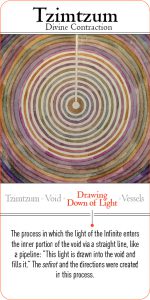Our Parasha deals with two topics: Shemita – the seventh year in a seven-year cycle during which land in Israel must lie fallow and debts are canceled; Yovel – Jubilee – the fiftieth year that comes after seven cycles of Shemita (seven years each cycle) and in addition to the rules of the Shemita the Torah also indicates that every man should return to his ancestral land.
The Parasha opens with the words “The Lord said to Moses at Mount Sinai…” and afterwards the Torah describes the precepts mentioned above. This opening raises a very famous question: what is the connection between Shemita and Mt. Sinai? This is because we know that all biblical laws have been given on Mt. Sinai; why is Mt. Sinai mentioned here and not in other places? Why with Shemita?
Another practical problem that these precepts create – if the farmer does not work the land for a year (Shemita) or for two years (Jubilee, the 49th and 50th of every cycle) what will the people eat? On this question the Torah answers “I will send you such a blessing in the sixth year that the land will yield enough for three years”. Meaning, the Torah expect us to have full faith that we don’t have to accumulate during the six years but to wait for the sixth year that will ensure the next three years.
Meaning, the Torah expect us to have full faith that we don’t have to accumulate during the six years but to wait for the sixth year that will ensure the next three years.
The Zohar indicates that Shemita (שמיטה) is from the root sh.m.t (ש.מ.ט) which means to drop (לשמוט), to let go. The lesson to be learned is that we need to understand that if we have connected to a certain thing – our body, home, relationships, wealth, objects, etc., it does not mean we own them and we need to know how to detach ourselves from them.
According to the Wisdom of Kabbalah everything in the universe started from the Creator’s Light, which is an endless energy of loving and sharing. Since that Light shares endlessly there has to be something that will be able to receive that bliss, and so the Vessel was created, meaning, endless souls that want to receive. The essence of that Light that filled us made us desire to be Creators as well. Therefore, we could not keep that Light and had to create Tsimtsum, contraction, which lead to the creation the world we know. Here, in this world, our role is to be creators and by this, earn the Light of Creation.
In its raw state, the Creator’s Light is called “Or deKhohma” – Light of Wisdom, and in order to reveal it we need “Or (light of) deHasadim”, Light of Loving-Kindness, that is being revealed when we resist our impulses and share. Among those desire we have to resist are, those the desires to hold on to objects or people and declare “this is ours”. The only correct way to resist our desires is to transform them into sharing with others. The moment we release our grasp to something, our impulse (Shemita), and overcome our fear of losing it, by believing and knowing that it was not ours from the outset, then we manage to create “Or deHasadim” – The Light of Loving-Kindness. Having that kind of faith we become leaders in our life rather than being led. We learn to let go in order to create good and draw it into our lives, to connect to the power of eternal life, the power of Mt. Sinai, and that is the connection between Shemita and Mt. Sinai.
This is also why our Parasha is always being read in the middle of the 50 days of The Counting of the Omer – a period of seven weeks that ends on Shavuot, Mt. Sinai revelation and our connection to eternal life.
To listen to the weekly Zohar Study click here
For additional study on Behar and other portions enter Live Kabbalah University
